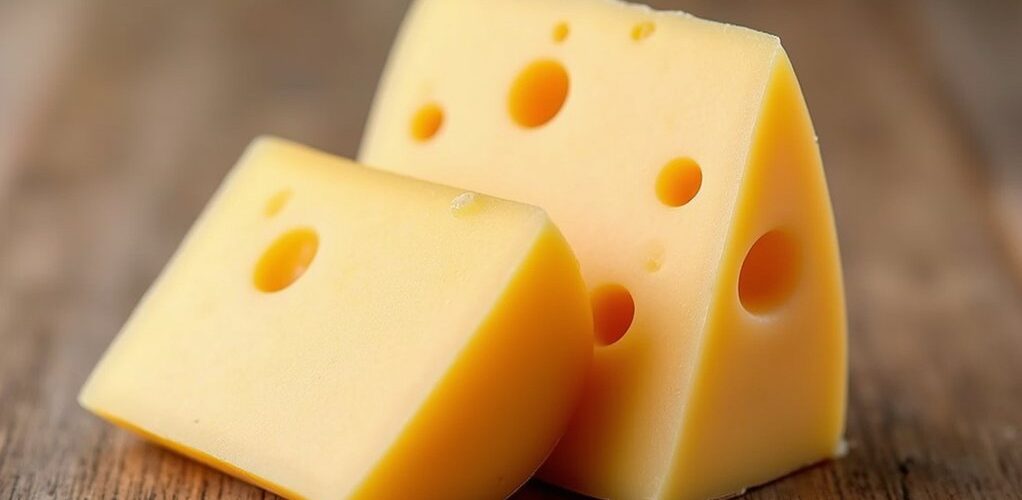
Cheese is an excellent low-carb food choice, with most natural varieties containing only 1-3 grams of carbohydrates per 100 grams. Hard cheeses like cheddar and parmesan typically offer the lowest carb content, while cream cheese and blue cheese provide approximately 1 gram per ounce. However, processed cheese products may contain hidden carbs from additives and fillers. Understanding the distinctions between natural and processed cheese varieties reveals the full potential of this versatile, nutrient-rich food.
Key Takeaways
- Most natural cheeses are very low in carbohydrates, containing only 0-3 grams of carbs per 100 grams serving.
- Hard and aged cheeses like parmesan, cheddar, and blue cheese have the lowest carb content among cheese varieties.
- Processed cheese products often contain hidden carbs from additives and fillers, making them less suitable for low-carb diets.
- Cheese offers significant health benefits including high protein, essential nutrients, and healthy fats while maintaining low carb content.
- Proper portion control of 1-2 ounces per serving ensures optimal benefits while managing carbohydrate intake effectively.
Understanding Carbohydrates in Cheese
When considering cheese as part of a low-carb diet, understanding its carbohydrate content is essential for making informed dietary choices. Most cheese varieties contain minimal carbohydrates, typically ranging from 0 to 3 grams per 100 grams, making them excellent options for low-carb eating plans. Hard cheeses, such as cheddar and parmesan, generally contain fewer net carbs than their softer counterparts, averaging 1-3 grams per 100 grams. Cream cheese and blue cheese are particularly low in carbohydrates, with cream cheese containing roughly 1 gram per ounce. The fermentation process in dairy products reduces lactose content, further lowering the carbohydrate levels. It's important to note that some keto-friendly cheese options like Parmesan and Swiss are not only low in carbs but also rich in protein and calcium. However, while cheese is generally low carb, monitoring serving sizes remains important, as the calorie-dense nature of cheese can impact overall dietary goals if consumed in large quantities.
Best Low-Carb Cheese Options
While numerous cheese varieties exist in the market, several stand out as particularly suitable for low-carb diets due to their minimal carbohydrate content and nutritional profiles. For those following low carb diets, options like Parmesan cheese and hard aged cheddars provide excellent protein content while containing just 1-3 net carbs per 100 grams. Cream cheese and goat cheese offer versatile alternatives, with the latter containing virtually no carbs and being particularly digestible. Keto-friendly options such as stevia and erythritol are often used alongside low-carb cheeses to enhance flavor without increasing carb content.
| Cheese Type | Net Carbs | Protein | Benefits |
|---|---|---|---|
| Parmesan | 1-3g | High | Rich in healthy fats |
| Goat Cheese | 0g | Moderate | Easy to digest |
| Cream Cheese | 1g/oz | Moderate | Recipe versatile |
| Blue Cheese | 0.5g/oz | High | Strong flavor |
Hidden Carbs in Processed Cheese Products
While natural cheese contains minimal carbohydrates, processed cheese products often harbor hidden carbs through additives like stabilizers, fillers, and modified food starches.
Common processed varieties, such as American cheese slices and spray cheese, can contain up to 2 grams of carbs per serving, considerably more than their natural counterparts.
Health-conscious consumers should examine ingredient labels carefully and opt for natural cheese varieties to avoid unnecessary carbohydrate consumption from processed alternatives.
Additives Increase Carb Content
The presence of additives in processed cheese products can greatly impact their carbohydrate content, making them less suitable for low-carb diets.
Common processed foods like spray cheese and American cheese slices typically contain stabilizers, fillers, and emulsifiers that add approximately 2 grams of carbs per serving.
For individuals following a ketogenic diet or other low carb diet, these hidden carbs can pose unexpected challenges.
The inclusion of added sugars and other carbohydrate-containing additives greatly increases the total carbohydrate content compared to natural cheese varieties.
To reduce the risk of consuming excess carbs, it's essential to check nutritional labels carefully when selecting cheese products.
This attention to detail helps maintain dietary goals while avoiding processed cheese products that may contain higher levels of carbohydrates than anticipated.
Watch These Hidden Ingredients
Scrutinizing ingredient labels becomes essential when selecting cheese products, as processed varieties often harbor hidden carbohydrates that can derail low-carb dietary goals.
Common processed cheese products, such as spray cheese and American cheese, contain significant carbs per ounce due to fillers and stabilizers, with approximately 2 grams per serving.
While mild cheddar cheese contains modest amounts of hidden carbs, sharp cheddar varieties typically offer better options for low-carb diets.
The presence of added sugars in processed cheese products further increases their carb content, making it vital to read labels carefully.
When maintaining a low-carb lifestyle, consumers should pay particular attention to ingredient lists, focusing on naturally aged cheeses rather than heavily processed alternatives that may include unnecessary carbohydrate-containing additives.
Real Cheese Versus Processed
Choosing real cheese over processed varieties makes a considerable difference in managing carbohydrate intake effectively.
While natural cheese typically contains only 1-3 grams of net carbs per 100g, processed cheese products can harbor hidden carbs through added fillers and stabilizers.
Full-fat, natural cheese offers superior nutritional benefits compared to its processed counterparts. Real cheese provides essential vitamins and minerals, whereas processed varieties often contain lower-quality dairy and artificial additives.
The carbohydrate content in processed cheese products can be deceptive, as a single serving may seem low in carbs but accumulate considerably when consumed in larger portions.
For those following a low-carb diet, selecting authentic cheese varieties like aged cheddar or gouda proves more beneficial than opting for processed alternatives like American or canned cheese products.
Health Benefits of Cheese on a Low-Carb Diet
While many dieters worry about including dairy in their meal plans, cheese emerges as a nutritional powerhouse for those following a low-carb lifestyle.
Research confirms that cheese offers significant health benefits while maintaining ketogenic diet compatibility, with minimal carbohydrate content of 0-3 grams per 100 grams.
The health advantages of incorporating cheese into a low-carb diet include:
- Supports weight loss through high-fat content and enhanced satiety
- Provides essential nutrients including calcium and vitamin K2 for bone health
- Contains high-quality protein for muscle maintenance and recovery
- Features conjugated linoleic acid (CLA), which may help prevent certain cancers
- Promotes cardiovascular health when consumed in moderate amounts, with studies showing reduced heart disease risk
- The ketogenic diet is known for its potential to reduce inflammation, which can be beneficial for overall health and immune response.
Smart Portion Control for Cheese Consumption
Although cheese offers numerous health benefits on a low-carb diet, proper portion control remains the cornerstone of successful dietary management. Understanding serving sizes, typically one ounce per portion, helps manage calorie and carb intake effectively. Using measuring tools, such as a food scale or measuring cups, guarantees accurate portioning and prevents overconsumption. Tracking consumption becomes particularly important with high-carb varieties like American cheese, which contains approximately 2 grams of carbs per slice, while others like goat cheese contain zero carbs. To maintain adherence to a low-carb diet while enjoying cheese, incorporating strongly flavored options like blue cheese or parmesan in smaller amounts can enhance meals without exceeding daily carb limits. This strategic approach allows for both satisfaction and successful dietary compliance. It's crucial to distribute protein intake evenly across meals to support muscle synthesis and maintain ketosis, which can be a valuable addition when managing dairy consumption on a low-carb regimen.
Incorporating Cheese Into Your Low-Carb Meal Plan
Successfully integrating cheese into a low-carb meal plan starts with understanding proper portion sizes, typically ranging from one to two ounces per serving to maintain nutritional balance while managing caloric intake. The versatility of cheese allows for creative pairings with low-carb vegetables, eggs, and lean proteins, making it easier to create satisfying meals that align with carbohydrate restrictions. When incorporating cheese into low-carb dishes, consider using stronger-flavored varieties like aged cheddar or blue cheese, as their robust taste means a smaller amount can deliver maximum flavor impact while keeping portions in check. To complement your meals, high-fat dairy options like full-fat cheese enhance flavors and promote satiety, ensuring your low-carb diet is both nutritious and enjoyable.
Smart Cheese Portion Control
Incorporating cheese into a low-carb meal plan requires strategic portion control to maximize flavor while managing caloric and carbohydrate intake.
Smart cheese selection and measuring servings can help maintain a balanced diet while enjoying this high in fat, flavorful food.
- Measure 1 oz portions of cream cheese, which contains 84 calories and only 1g of carbs
- Choose strong-flavored cheeses like aged cheddar or blue cheese to satisfy cravings with smaller amounts
- Use cheese crisps as low-carb chip alternatives, providing 14g of fat and 1g of carbs per ounce
- Add 1 tablespoon of Parmesan cheese for 21 calories and 0.7g of carbs to enhance flavor
- Monitor total cheese intake, especially with higher-carb options like ricotta, to maintain dietary goals
Best Low-Carb Cheese Pairings
Once cheese portions are properly managed, discovering ideal food combinations can maximize its role in a low-carb eating plan. For those following keto or low-carb diets, pairing cheese with non-starchy vegetables like broccoli and bell peppers creates satisfying meals while keeping net carbs minimal.
Smart cheese pairings extend beyond vegetables. Adding Parmesan to salads introduces richness without significant carbohydrates, while cheese crisps offer a crunchy alternative to conventional snacks.
Cream cheese serves as a versatile ingredient in low-carb casseroles and dips, contributing minimal carbs while enhancing texture. For maximum flavor impact with controlled portions, incorporating strong cheeses like blue cheese with low-carb meats creates satisfying combinations that align with carbohydrate-restricted eating plans.
Common Pitfalls When Choosing Cheese for Low-Carb Diets
While cheese is generally considered a low-carb food, several common pitfalls can catch dieters off guard when selecting cheese products for their low-carb lifestyle. Understanding these challenges helps maintain successful carbohydrate control while enjoying dairy products.
- Processed and spray cheese varieties contain fillers that increase carbohydrate content.
- Low-fat and reduced-fat alternatives often include added sugars and starches.
- Mild cheddar contains more carbs than aged or sharp cheeses.
- Ricotta and cottage cheese have higher carb counts than hard cheeses.
- Some cheese products may have hidden carbs not immediately apparent without checking nutritional labels.
Being vigilant about portion control and carefully reading nutritional labels can help avoid these common pitfalls. Opting for naturally aged, sharp cheeses like Parmesan or aged cheddar provides better low-carb options while maintaining satisfying flavor profiles. Additionally, sugary snacks and desserts should be avoided as they can disrupt ketosis.
Frequently Asked Questions
Can You Eat Cheese on a Low Carbohydrate Diet?
Most cheese types align perfectly with low carb and keto diets, offering beneficial nutrition and satisfying cheese cravings. Hard and soft varieties make excellent low carb snacks when consumed in appropriate portions.
How Does Cheese Have No Carbs but Milk Does?
During dairy processing, cheese composition changes as whey protein containing milk sugars is removed. Fermentation process further breaks down lactose content, resulting in minimal carbohydrates compared to milk's higher sugar levels.
What's the Worst Carb for Belly Fat?
Refined sugars from processed foods, especially high fructose corn syrup in sugary beverages, candy bars, and fast food, combined with refined grains like white bread represent the most detrimental carbohydrates for belly fat accumulation.
Can I Have Dairy on a Low Carb Diet?
Dairy can be incorporated into low-carb diets through various cheese varieties and keto-friendly options. Portion control remains essential, while lactose-intolerant individuals can explore dairy alternatives while maintaining calcium intake and healthy fats.
Conclusion
Cheese can be an excellent addition to a low-carb diet when chosen and portioned wisely. Natural, aged cheeses typically contain minimal carbohydrates while offering valuable protein, calcium, and healthy fats. However, processed cheese products often hide unexpected carbs and additives. By selecting authentic cheeses, practicing portion control, and avoiding highly processed varieties, individuals can successfully incorporate this versatile dairy product into their low-carb lifestyle while maximizing nutritional benefits.
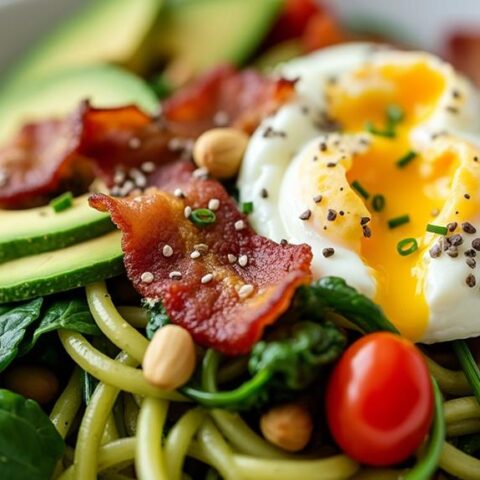
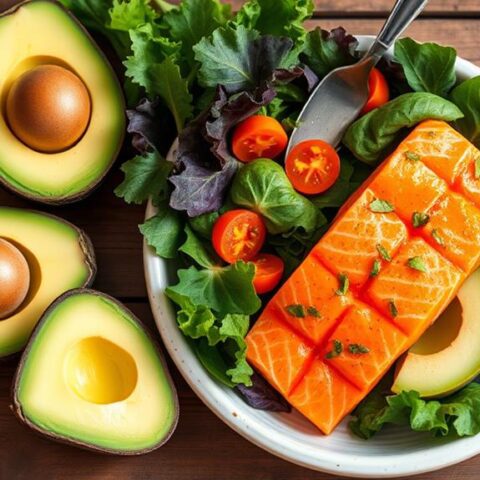


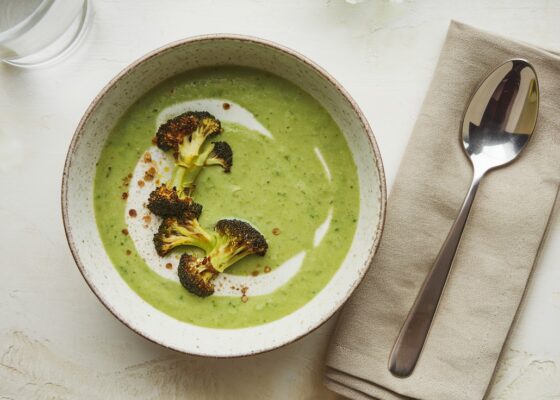

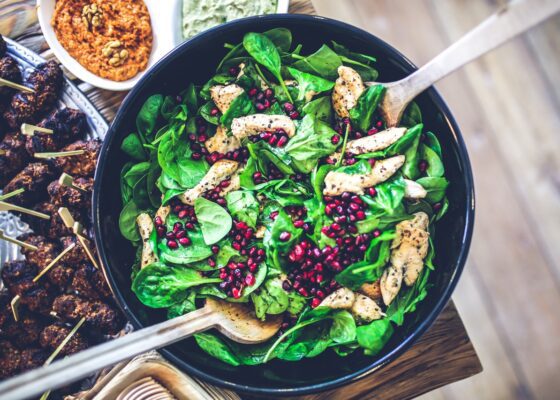

No Comments